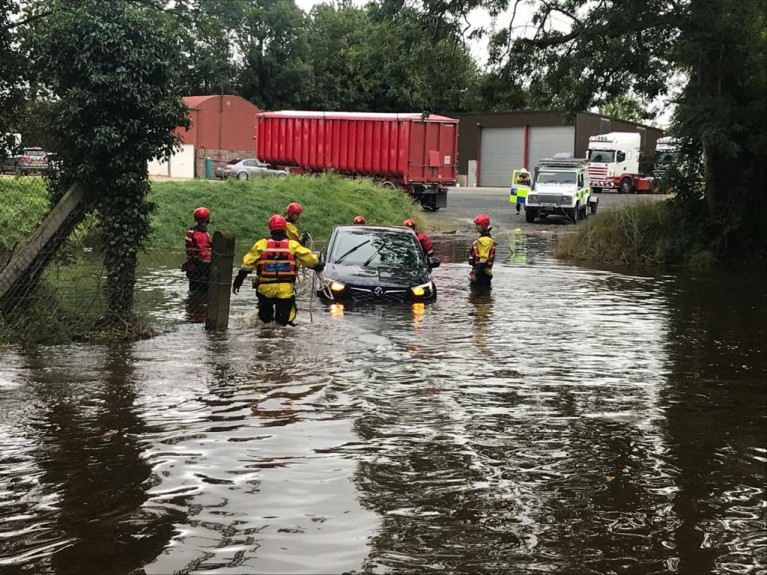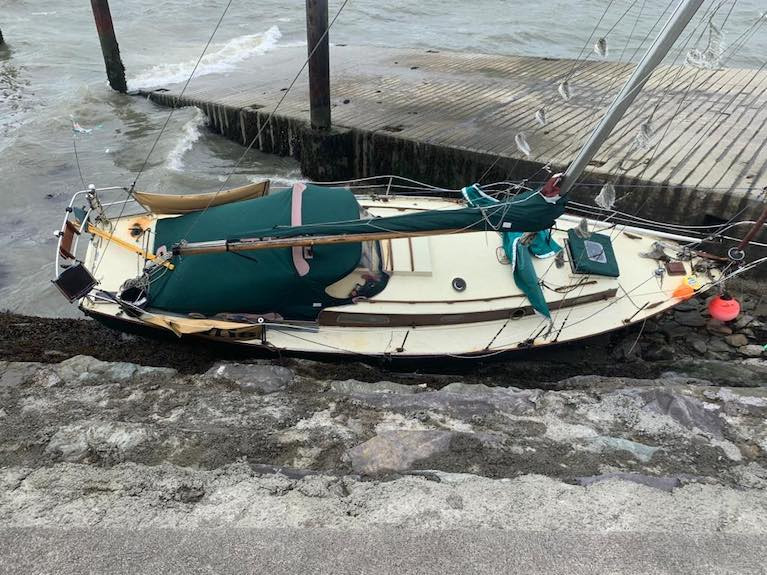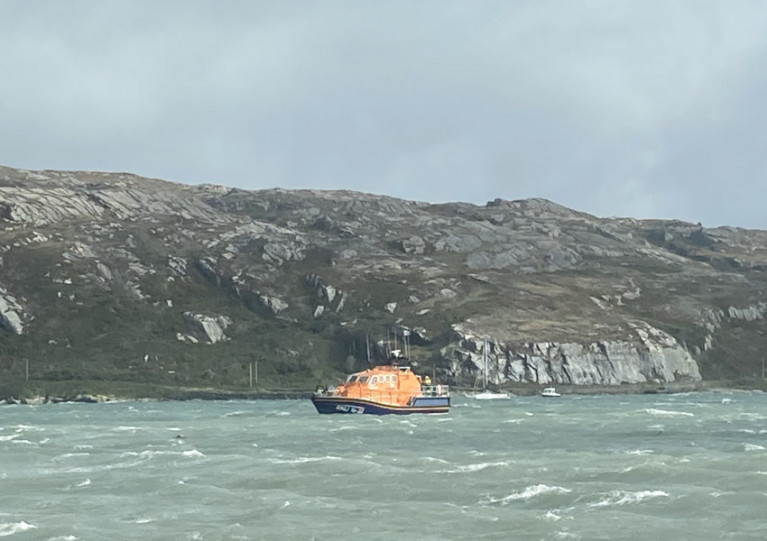Displaying items by tag: Storm Francis
Newcastle Community Begins Clean-Up As Storm Francis Flooding Leaves Co Down Seaside Town ’A Disaster Zone’
Clean-up operations are under way in Newcastle and other parts of Co Down after the Shinma River burst its banks due to heavy rainfall from Storm Francis yesterday (Tuesday 25 August).
As BreakingNews.ie reports, as many as 300 homes were affected by the floodwaters which rose over one metre in some areas.
South Down MLA Colin McGrath said of the scene: “It is like a disaster zone.”
Respect to the lads from the Rivers Agency who are working in difficult conditions into the night in Newcastle to prevent flooding of nearby homes. pic.twitter.com/lnKygGfWOj
— Kevin Sharkey Pull Together - Stay Apart. (@tv_KevinSharkey) August 25, 2020
Flooding was particularly acute in the Bryansford Avenue area of Newcastle, along the north side of the Shinma River at the foot of the Mournes.
The Northern Ireland Fire and Rescue Service said a number of people were rescued from their homes as a specialist rescue team, flood response teams and local crews attended the situation.
Between midnight & 5pm today we have attended 28 flooding incidents across the Newcastle, Maghera, Draperstown & Cookstown areas. Working in challenging conditions, Firefighters, with the support of other agencies, rescued 37 people from flood water. #NotjustFires #SaferTogether pic.twitter.com/i5mXaPDwKC
— Northern Ireland Fire & Rescue Service (@NIFRSOFFICIAL) August 25, 2020
Dozens of homes and businesses in Co Cork were also damaged by flooding and strong winds as the storm blew through the county early yesterday. The Irish Times has more on the story HERE.
Storm Francis Hits Baltimore Harbour in West Cork
Storm Francis hit the West Cork Harbour of Baltimore today with the town's RNLI lifeboat called out to nearby Crookhaven Bay to two yachts in difficulty on moorings as Afloat reported here this morning.
Pleasure craft in Baltimore Harbour itself were also in difficulty in the storm-force winds.
Last week Storm Ellen felled trees and flooded towns, with Cork receiving the worst battering, and now the arrival of Storm Francis has caused even more damage in some of the worst-hit places.
A RIB broke its mooring in Baltimore. this afternoon but was towed safely back out to sea after some quick thinking seamanship as seen in this reader vid below.
Unfortunately, a classic yacht also broke its moorings in the West Cork marine leisure centre and has been damaged according to eyewitness accounts. See the reader vid below.
Baltimore RNLI’s volunteer crew launched to the aid of two yachts in difficulty in Crookhaven Harbour as Storm Francis passed over West Cork this morning (Tuesday 25 August).
The two vessels, one with four on board and the other with two, were dragging their moorings in the strong Force 9 winds, gusting up to Force 11, and rough sea conditions with a five-metre swell.
RNLI volunteers at the scene launched the smaller Y-boat from the all-weather lifeboat to get close enough to secure extra lines from the yachts to nearby moorings, and helped stead one of the yachts by dropping and extra anchor upwind.
Lifeboat crew member Micheal Cottrell said: “The skippers did the right thing in looking for assistance as soon as they knew their moorings weren’t holding, especially considering the storm hadn’t reached its full force at the time.”
A Status Yellow gale warning remains in place with Met Éireann forecasting cyclonic variable winds to reach gale or strong gale this afternoon, on Irish coastal waters from Carlingford Lough to Valentia to Belfast Lough and on the Irish Sea south of the Isle of Man.
The meteorological service also issued a Small Craft Warning as southeasterly winds were expected reach Force 6 or 7 for a time early this afternoon on coasts from Belfast Lough to Carlingford Lough, and on the Irish Sea north of the Isle of Man.


























































